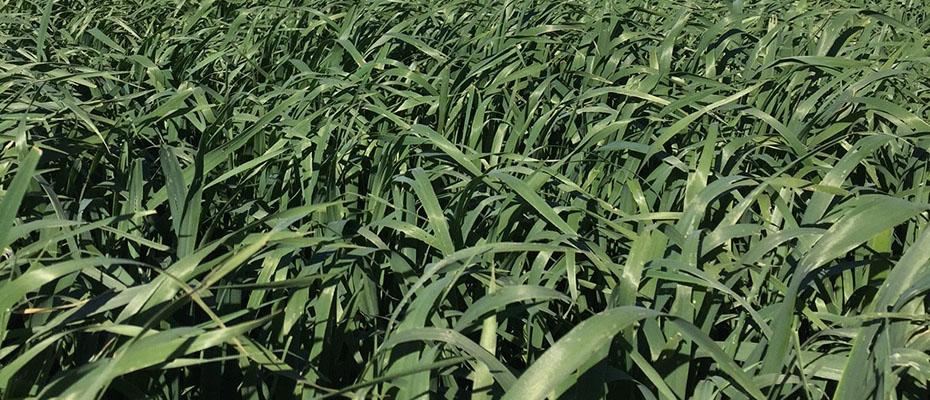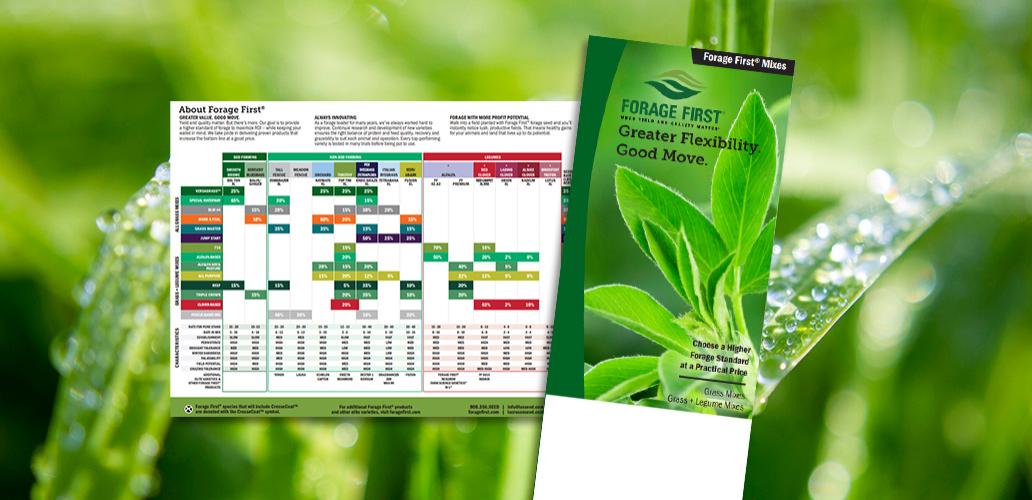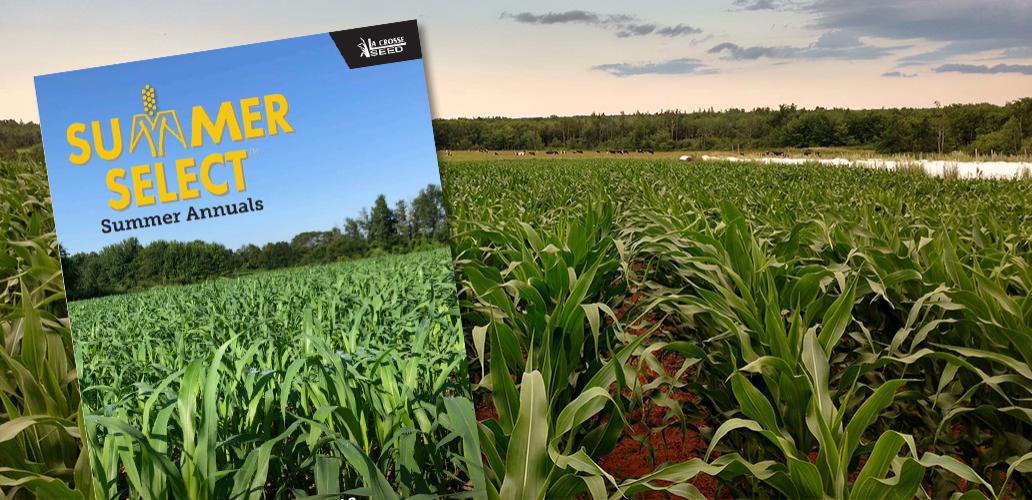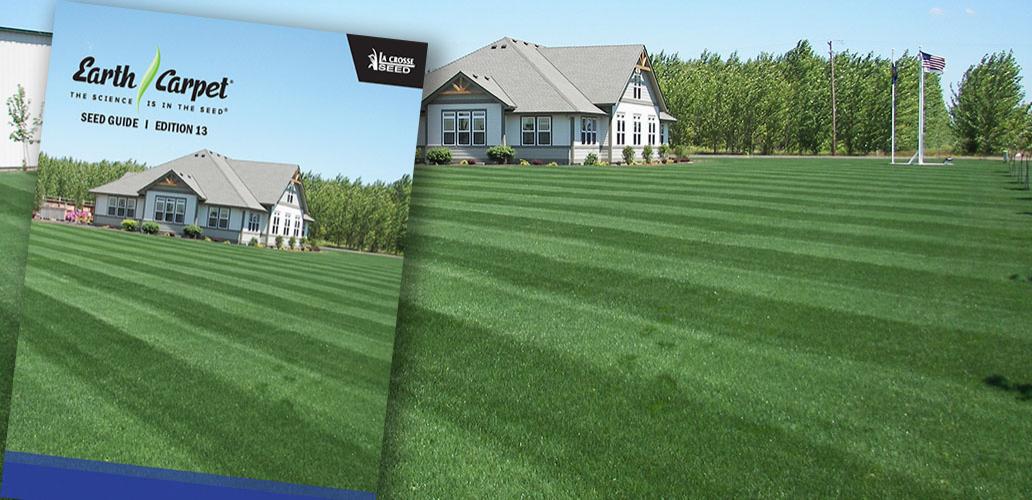Forage First Guide I Summer Select Guide
Greater Value. Good Move. Yield and quality matter. But there’s more. Our goal is to provide a higher standard for forage to maximize ROI– while keeping your wallet in mind. We take pride in delivering proven products that increase the bottom line at a good price.

Spring Oat cover crop seed is ideal for the entry-level cover cropper as it will not over-winter in most areas of the Midwest.
CHARACTERISTICS:
Non-Forage Benefits:
1 = Poor; 5 = Excellent
Compaction Alleviation: 2
Weed Suppression: 4
Biomass Production: 5 (Hay); 4 (Silage)
Erosion Control: 4
Disease/Pest Control: 3
Pollinator/Beneficials: 1
P & K Cycling: 3
Ease of Establishment: 4
Nitrogen Fixer/Scavenger: Scavenger
Nutritional Value:
Values Vary Greatly Depending on Maturity
Crude Protein: 10 (Hay); 12 (Silage)
NEL¹ Mcal/lb.: .54 (Hay); .60 (Silage)
ADF%²: 39
NDF%³: 63 (Hay); 59 (Silage)
TDN: 54 (Hay); 60 (Silage)
DM Tons/Acre: 3-6 (Hay); 1.5-3.5 (Silage)
Days to First Harvest: 60-70 (Hay); 80 (Silage)
Days to Next Harvest: –
¹- Net Energy for Lactation = Energy available after subtracting digestive and metabolic losses
²- Acid Detergent Fiber = Low values mean more digestible
³- Neutral Detergent Fiber = Low values mean cows can eat more
Ranking (Good, Better, Best):
Graze: Better (Hay) ; NA (Silage)
Baleage: Good
Chop: Best
SEEDING:
Planting Time:
Mar.-Apr.; Aug.-Sept.
Seeding Rate:
Mono (lbs./acre): 30-50
Mix (lbs./acre): 20-40
Forage (lbs./acre): 80-120
Aerial (lbs./acre): 20-60
Seeding Info:
Carbon/Nitrogen Ratio (C:N): Vegetative- 20:1 (Hay); Straw- 80:1 (Silage)
Seeding Depth (in./with drill): 3/4-1
Seeds/lb.: 15-18,000
Bulk Density (lbs./ft.³): 38 (Hay); – (Silage)
Aerial Application Rate: 20-60
Germination Soil Temp.: 38 F
USDA Hardiness Zone: 7
Days to Emergence: 5-8
MANAGEMENT:
Considerations
-
- Oats can be planted in the fall, as long as it’s early enough to justify 60-90 day production.
Removal Rates
-
- Equivalent 80 bushel yield crop, 70-90# N, 30# P, 100# K
Fertility
Fertilizer removal rates need to be considered as well. When utilizing cover crops as forage, it’s critical to consider the nutrients being removed along with the biomass. These fertilizer levels will need to be added to ensure maximum nutrient availability for the following cash crop.
Hay Production
Hay yields often average between 2-4 tons/acre. Moisture content should be between 15-20% moisture. Hay quality is more maturity-dependent at harvest than is silage.
The most efficient time to harvest small grain cereals for hay is at early-milk stage. This allows for the greatest compromise between forage yield and
quality (quality would be greatest at the late-boot stage). To help speed up drying, a crimper is recommended when harvesting in the late-boot stage
Silage Production
Wheat, barley, oat and triticale silage yields are similar, 4-7 tons/acre of 35% dry matter forage in the boot stage and closer to 6-10 tons/acre when harvested in the late-boot stage. Small grains should be ensiled at between 62–68% moisture. Chop length should be set finer than when harvesting corn or forage sorghum. (Kansas State University)
- The perfect nurse crop for legumes and brassicas
- Oats offer unique symbiotic relationship with many other cover crops (increased mycorrhizae colonization)
- Oats effectively scavenge left over nitrogen, phosphorus, and potassium left over from cash crops, especially when given enough time to mature
- Heavy producer of bio-mass in 8-10 weeks; great for smothering weeds
- Left over residue (if any) in spring can easily be managed with light disking
- Spring oats can be planted in the fall, as long as it’s early enough to justify 90-100 day production
- Differences exist between forage oats and earlier maturing varieties
- Best use: Silage (milk-dough stage) and hay (boot-heading stage)















